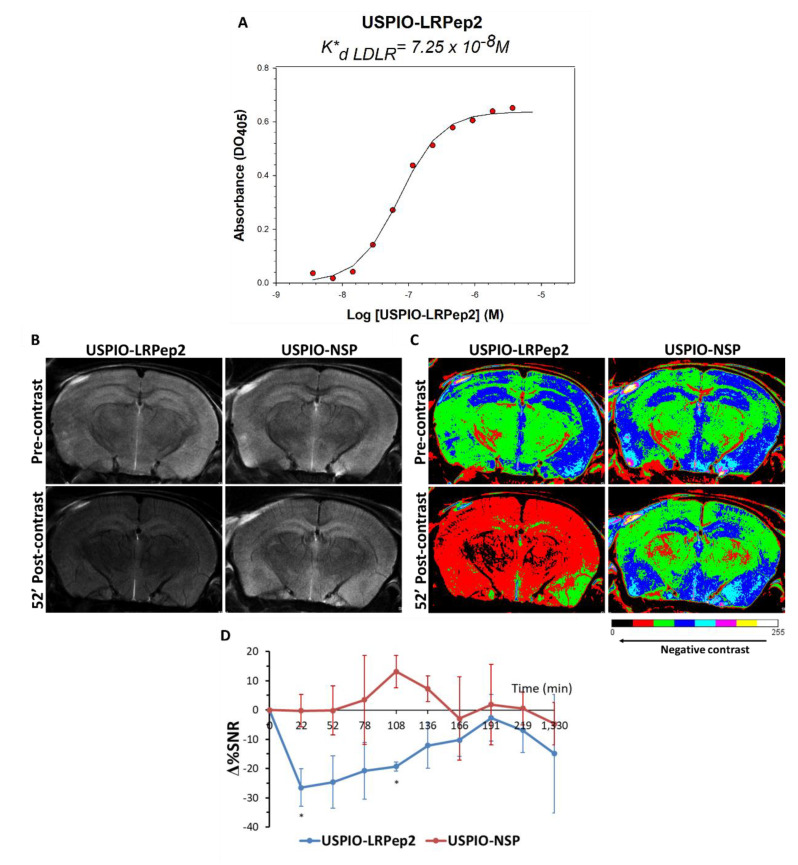Figure 7.
(A) The apparent dissociation constant (K*d) of ultrasmall superparamagnetic particles of iron oxide (USPIO)-LRPep2 for LDLR. The inflection point of the curve corresponded to the apparent dissociation constant (K*d) of USPIO-LRPep2 for the binding to LDLR, and the strength of the affinity was inversely proportional to the K*d value. (B–D) In vivo evaluation of the blood-brain barrier (BBB) crossing ability of USPIO-LRPep2 by MRI. (B) Representative raw coronal MRI images of the brains (bregma: −1.64 mm) of NMRI (Naval Medical Research Institute) mice acquired with the rapid acquisition with relaxation enhancement (RARE) protocol (spatial resolution = 48 µm) before (pre-contrast) and 52 min after injection of USPIO derivatives (post-contrast). Accumulation of USPIO derivatives (negative contrast agents) led to the darkening of the brain tissue. (C) Color overlay images, allowing to better visualize the negative contrast produced by USPIO, which is directly proportional to the red and black pixels. (D) Analysis of the percentage change of signal-to-noise ratio (Δ%SNR) produced by USPIO on MRI images of the brain, measured by the ImageJ software. A decreased Δ%SNR corresponded to the negative contrast generated by USPIO derivatives. *: p < 0.05.

